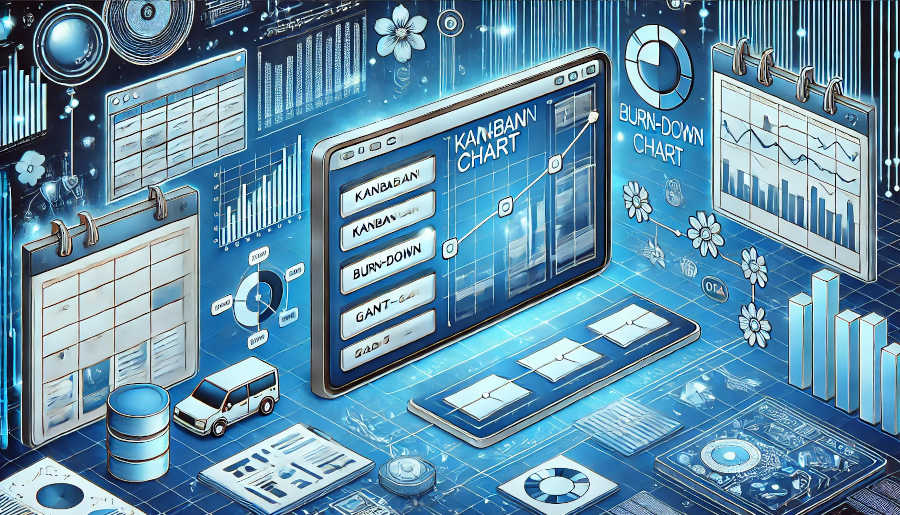Concept Stage: Laying the Foundation for Cost Management
The concept stage of the IPD process is the initial phase where ideas are generated, market needs are identified, and the basic concept of the product takes shape. This stage sets the tone for the entire product development journey and has a profound impact on costs. Firstly, during the market research and opportunity identification sub - activities, companies invest resources in gathering data about customer needs, competitor offerings, and market trends. This involves surveys, interviews, and analysis, all of which incur costs. However, this investment is crucial as it helps in defining a product concept that has market potential. A well - defined concept reduces the risk of costly rework in later stages.
Secondly, the concept generation and evaluation process also contribute to costs. Multiple ideas are brainstormed, and each concept needs to be evaluated in terms of technical feasibility, economic viability, and strategic fit. This requires the involvement of cross - functional teams including engineers, marketers, and financial experts. Their time and expertise come at a cost. But again, a thorough evaluation at this stage can prevent the pursuit of unfeasible concepts that could lead to significant cost overruns down the line. For example, if a concept is found to be too complex to manufacture at a reasonable cost during the evaluation, it can be discarded early, saving substantial development and production costs.
Finally, the establishment of a product roadmap and initial project plan in the concept stage also has cost implications. The roadmap outlines the key milestones and deliverables, and the project plan details the resources required, timelines, and budget. A well - structured plan helps in accurately estimating costs and allocating resources efficiently. It provides a framework for cost control throughout the product development process. If the roadmap and plan are not well - thought - out, it can lead to budgetary uncertainties and cost escalations as the project progresses.
Development Stage: Managing Costs Amidst Complexity
The development stage is where the product concept is transformed into a tangible product. This stage is characterized by intense activity, including design, prototyping, testing, and refinement, all of which have a direct impact on costs. In the design phase, engineers strive to create a product that meets the specified requirements. The choice of materials, components, and manufacturing processes at this stage can significantly affect costs. For instance, using high - end materials may enhance product performance but will also increase material costs. On the other hand, choosing cheaper materials without proper consideration may lead to quality issues and costly rework later.

Prototyping is another area where costs can accumulate. Building physical prototypes allows for the validation of design concepts and the identification of potential problems. However, the process of creating prototypes, especially multiple iterations, requires investment in materials, labor, and equipment. Each prototype may need to be tested extensively, which also incurs costs in terms of time and resources. Moreover, if the prototypes do not meet the expected performance criteria, additional iterations may be required, further driving up costs.
Testing and refinement are crucial for ensuring product quality. Different types of tests, such as functional testing, reliability testing, and safety testing, need to be conducted. These tests involve specialized equipment and skilled personnel, adding to the cost. During the refinement process, any design changes or improvements based on test results can also impact costs. If the development team fails to manage these activities effectively, costs can spiral out of control. However, proper cost management in the development stage can lead to a high - quality product that is ready for market launch at a reasonable cost.
Launch Stage: Balancing Costs and Market Entry
The launch stage of the IPD process is when the product is finally introduced to the market. This stage involves marketing, distribution, and post - launch support activities, all of which have cost implications. Marketing activities are essential for creating awareness and generating demand for the product. Advertising campaigns, both online and offline, require significant investment. The cost of developing marketing materials, such as brochures, videos, and websites, also adds up. Additionally, promotional activities like product launches, trade shows, and giveaways can be costly. However, a well - planned marketing strategy can increase product visibility and drive sales, offsetting the marketing costs.
Distribution is another area where costs need to be managed. Deciding on the distribution channels, whether it's through direct sales, retailers, or e - commerce platforms, has cost implications. Each channel has its own associated costs, such as commissions, shipping, and warehousing. For example, selling through retailers may require providing them with a margin, while setting up an e - commerce platform involves costs related to website development, maintenance, and logistics. Ensuring an efficient distribution network is crucial to minimize costs while ensuring the product reaches the customers in a timely manner.
Post - launch support is often overlooked when considering costs, but it can be a significant expense. Customers may require technical support, product repairs, or software updates. Providing these services requires a dedicated support team, spare parts inventory, and infrastructure for handling customer inquiries. If not managed properly, post - launch support costs can erode the product's profitability. However, good post - launch support can enhance customer satisfaction and loyalty, leading to repeat business and positive word - of - mouth, which can ultimately justify the costs.
In conclusion, each stage of the IPD process - concept, development, and launch - has a distinct impact on costs. The concept stage sets the foundation for cost management by defining a viable product concept and creating a well - structured plan. The development stage requires careful management of costs amidst the complexity of design, prototyping, testing, and refinement. The launch stage involves balancing the costs of marketing, distribution, and post - launch support to ensure a successful market entry. By understanding the cost implications of each stage and implementing effective cost management strategies, companies can optimize their product development processes. This not only helps in controlling costs but also in delivering high - quality products to the market in a timely and cost - effective manner. It enables companies to gain a competitive edge in the market, enhance profitability, and drive long - term growth. Effective cost management across the three stages of the IPD process is thus an essential ingredient for the success of any product development initiative.
ARTICLE TITLE :The impact of the three stages of the IPD process on costs ,AUTHOR :ITpmlib

















